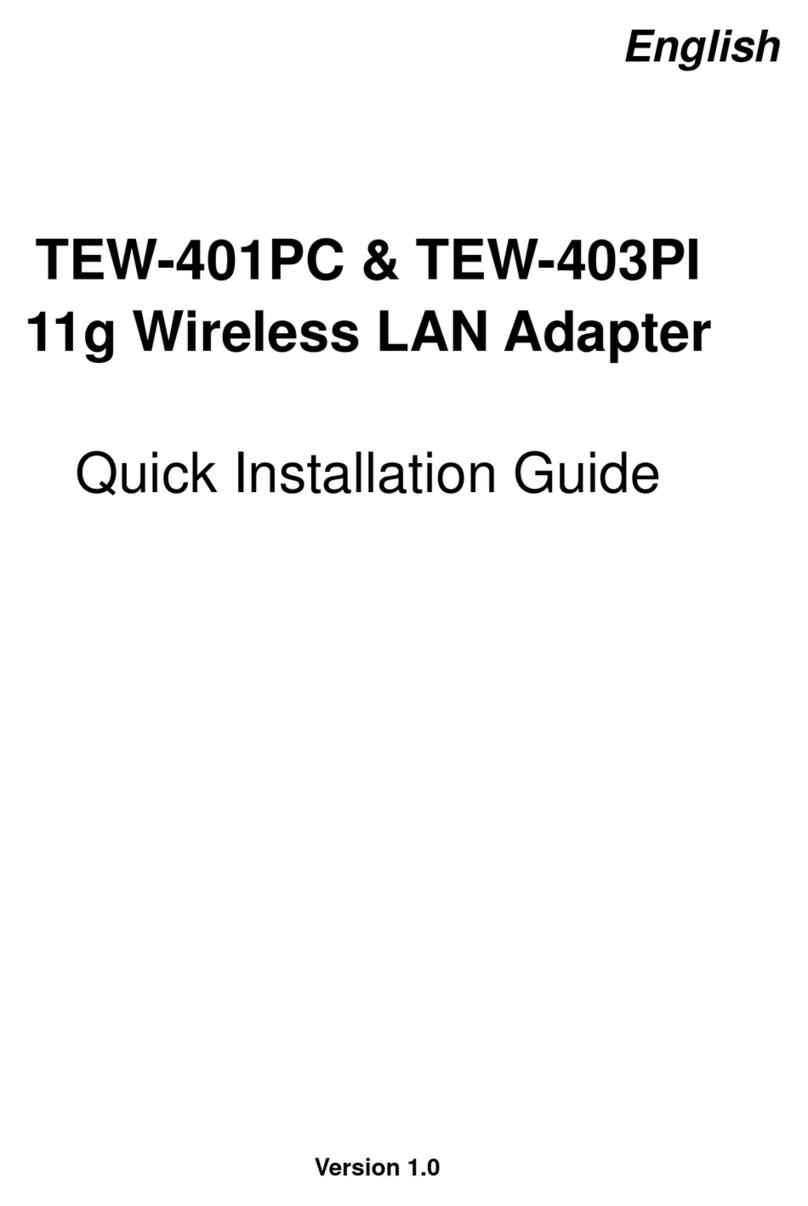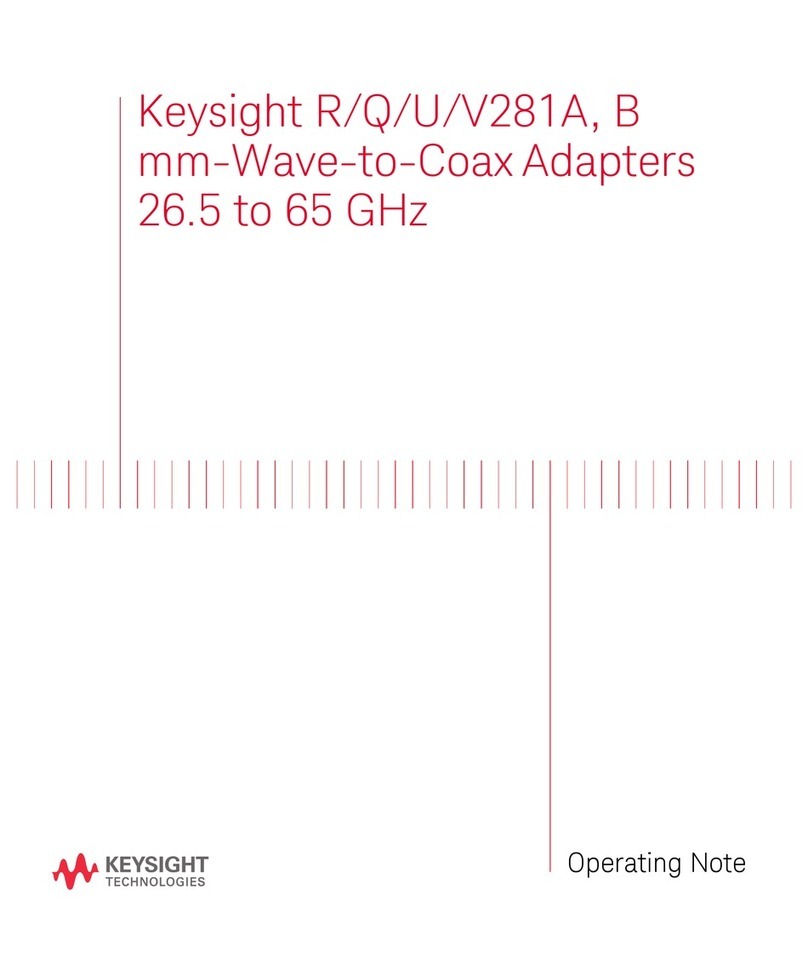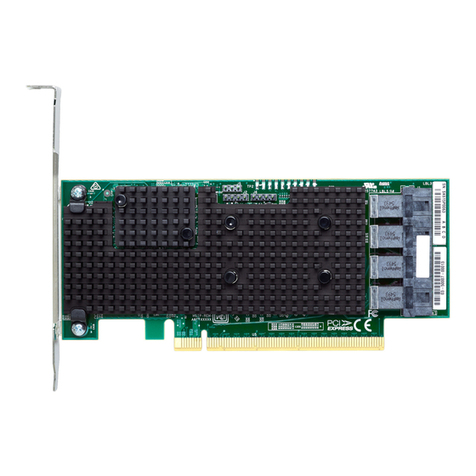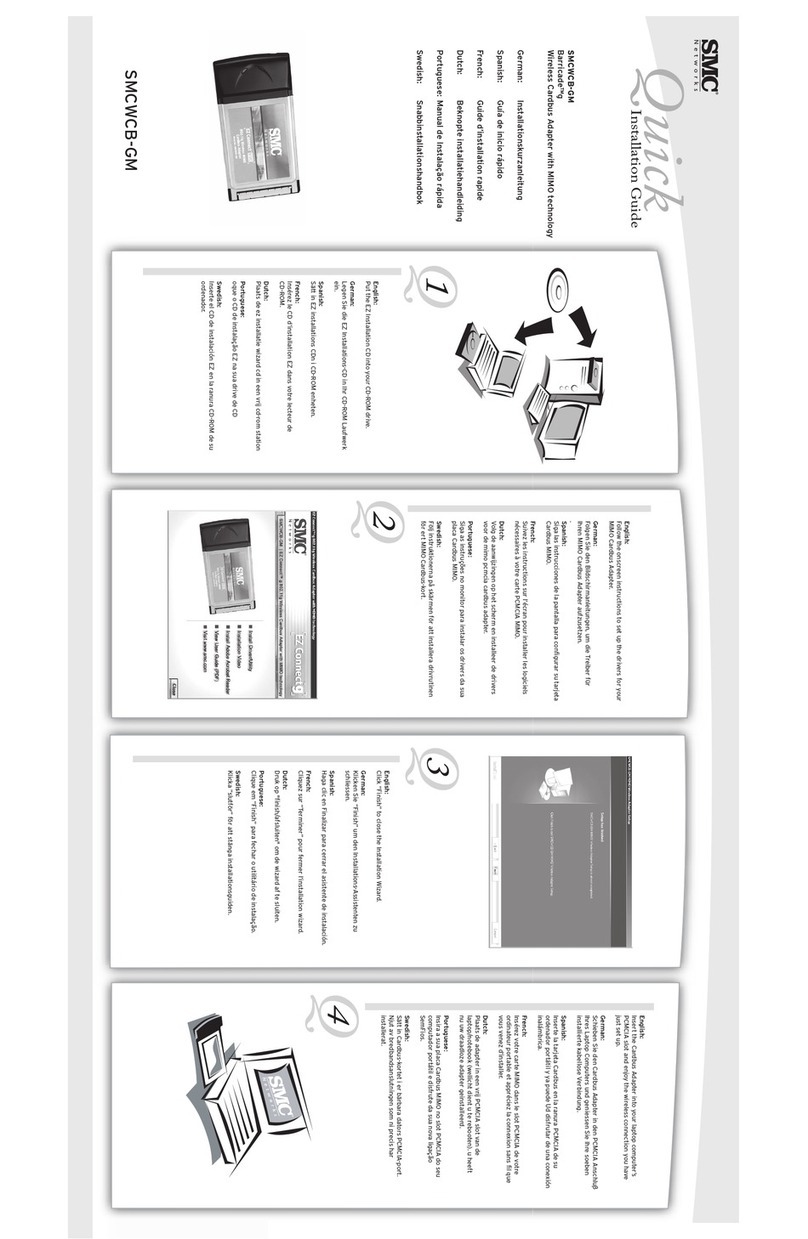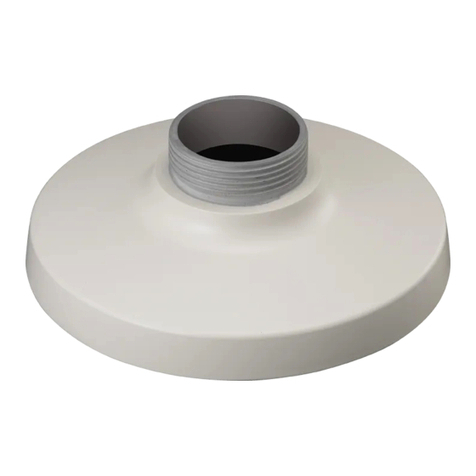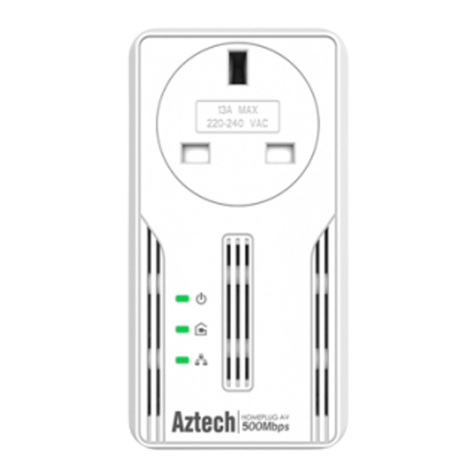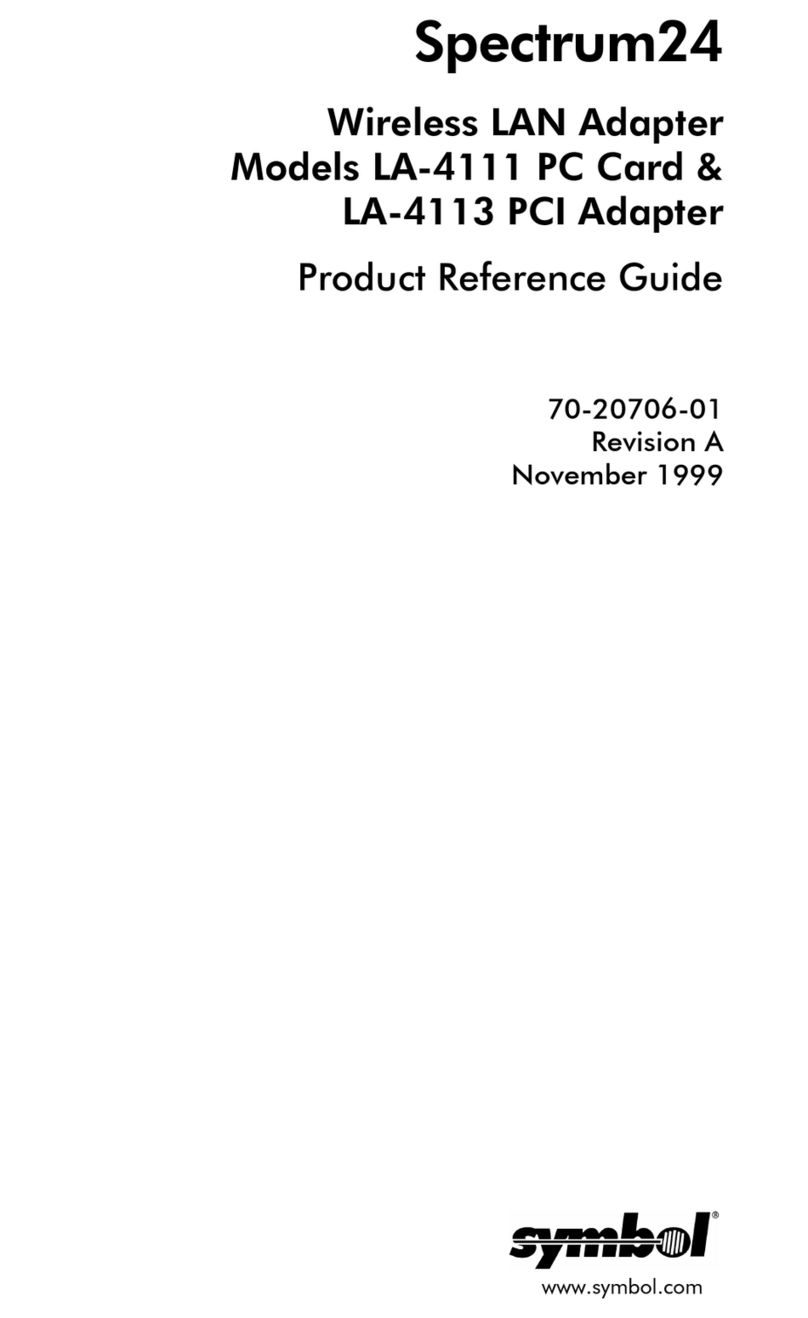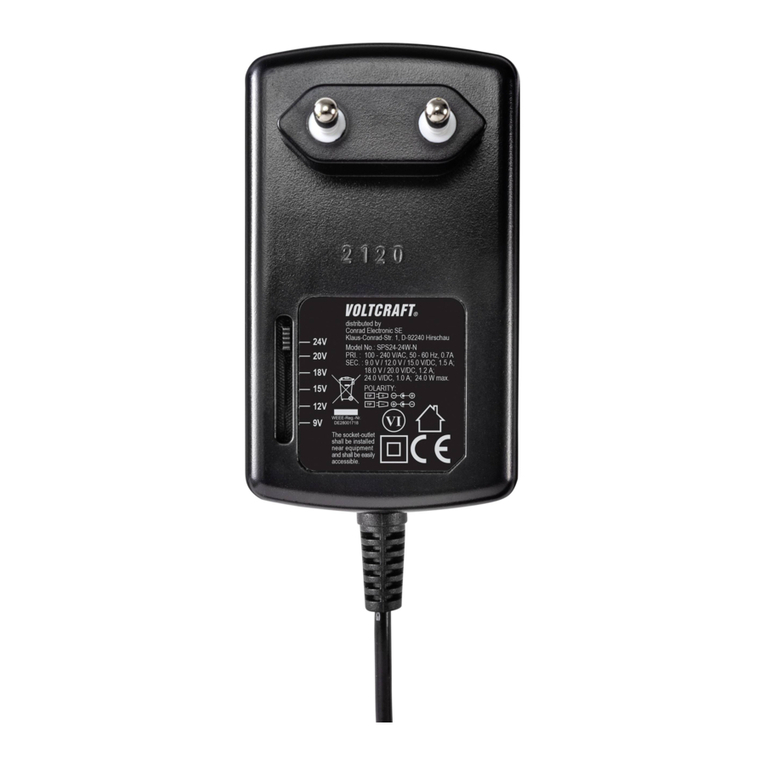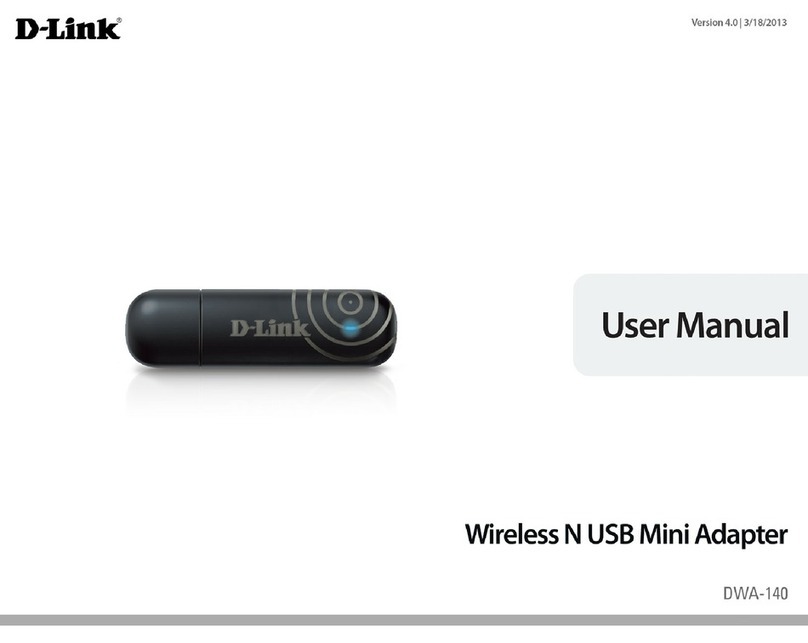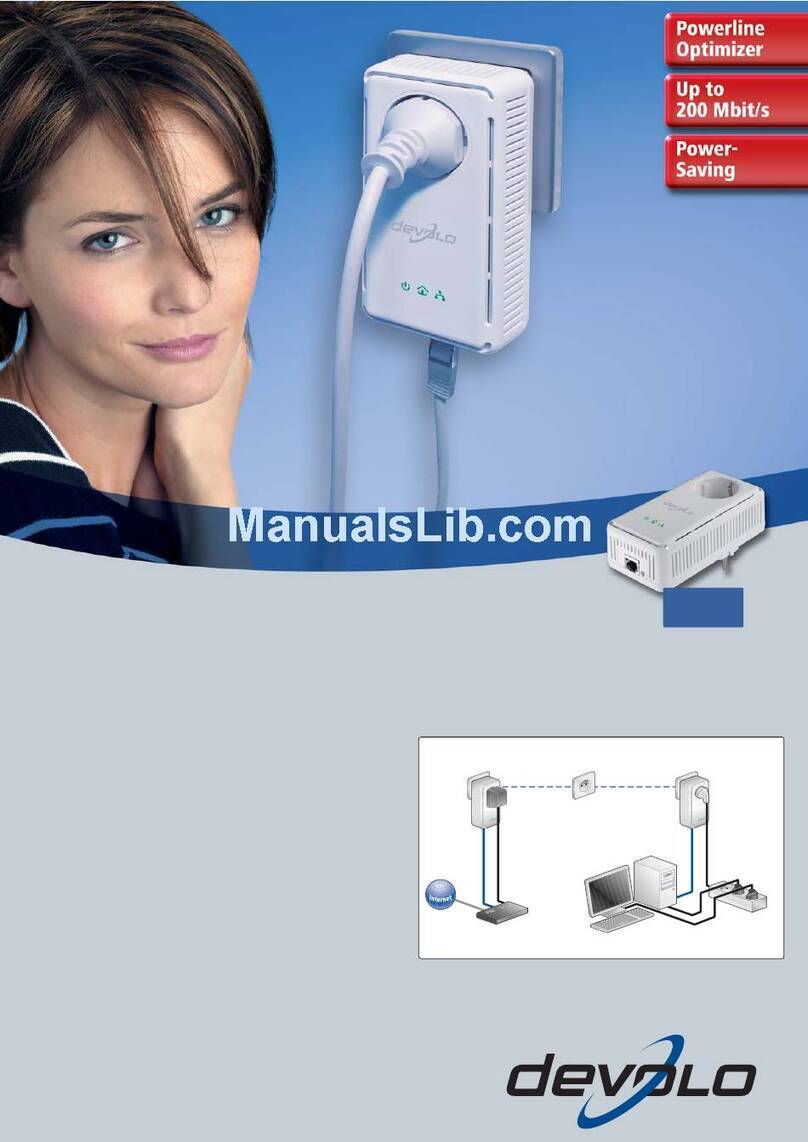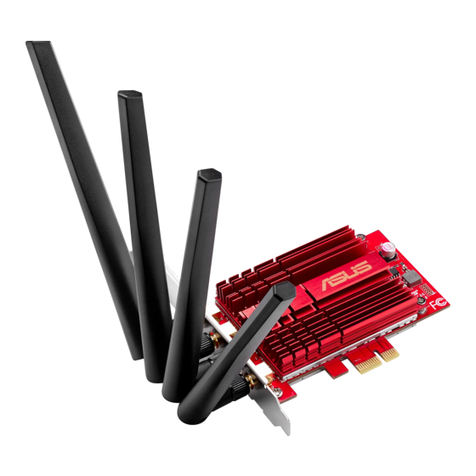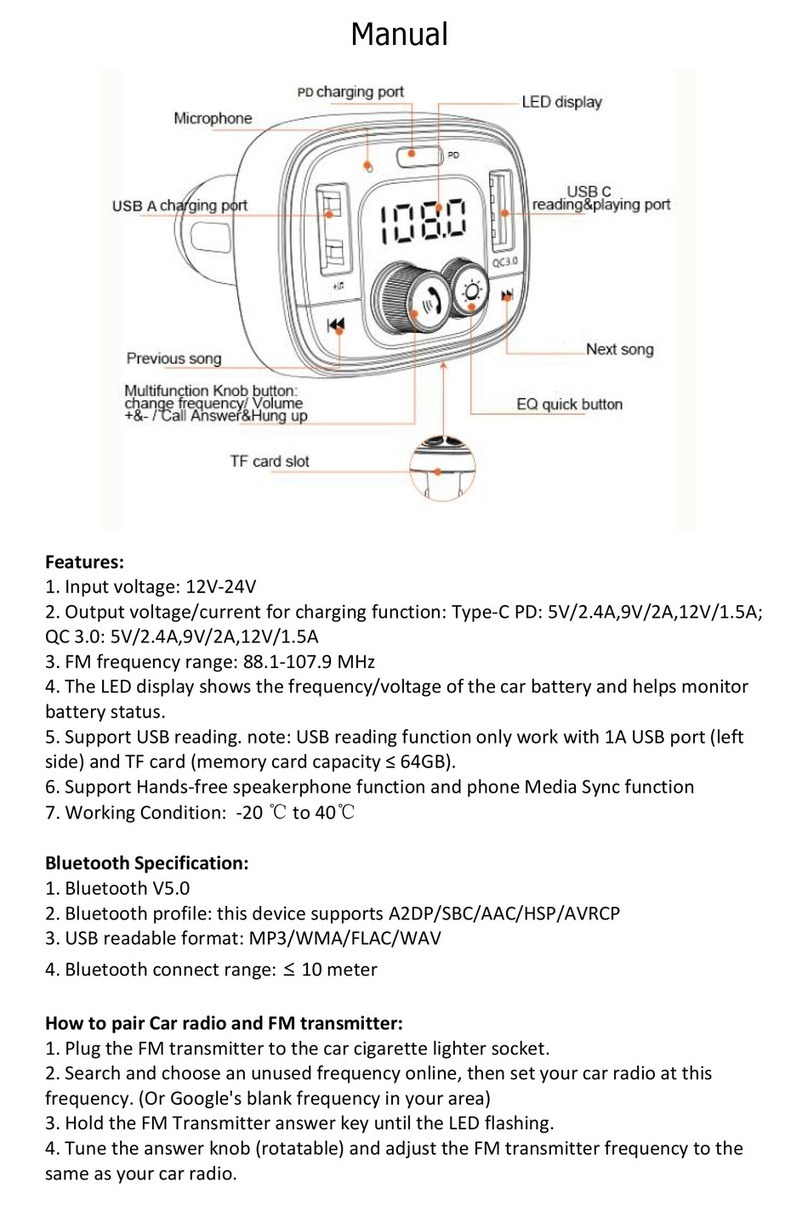Addi-Data ADDICOM PA 7400 Series Parts list manual

Technical support:
Arsène Klein
+49 (0)7223 / 9493-20
Technical description
ADDICOM PA 7400
Communication adapter
4th edition 07/1999

Copyright
All rights reserved. This manual is intended for the manager and its personnel.
No part of this publication may be reproduced or transmitted by any means.
Offences can have penal consequences.
Guarantee and responsibility
Basically are effective our "general terms of delivery and payment". The manager receives
them at the latest with the invoice. Claims for guarantee and responsibility in case of injuries
and material damages are excluded, if they are due to one or some of the following causes:
- if the board has not been used for the intended purpose
- improper installation, operation and maintenance of the board
- if the board has been operated with defective safety devices or with not appropriate or
non-functioning safety equipment
- nonobservance of the instructions concerning: transport, storage, inserting the board, use,
limit values, maintenance, device drivers
- altering the board at the user's own initiative
- altering the source files at the user's own initiative
- not checking properly the parts which are subject to wear
- disasters caused by the intrusion of foreign bodies and by influence beyond the user's
control.
Licence for ADDI-DATA software products
Read carefully this licence before using the standard software. The right for using this software
is given to the customer, if he/she agrees to the conditions of this licence.
- this software can only be used for configuring ADDI-DATA boards.
- copying the software is forbidden (except for archiving/ saving data and for replacing
defective data media).
- deassembling, decompiling, decoding and reverse engineering of the software
are forbidden.
- this licence and the software can be transferred to a third party, so far as
this party has purchased a board, declares to agree to all the clauses of this licence contract
and the preceding owner has not kept copies of the software.
Trademarks
Borland C and Turbo Pascal are registered trademarks of Borland International, INC.
Burr-Brown is a registered trademark of Burr-Brown Corporation
Intel is a registered trademark of Intel Corporation
CompactPCI is a registered trademark of the PCI Industrial Computer Manufacturer Group
(PICMG)
Microsoft, MS-DOS, Visual Basic and Windows are registered trademarks of
Microsoft Corporation
The original version of this manual is in German. You can obtain it on request.

i
WARNING
In case of wrong use and if the board is not used for
the purpose it is intended for:
people may be the board, PC and the environment
injured peripheral may be may be
destroyed polluted
««« Protect yourself, the others and the environment«««
•Do read the safety leaflet!
If this leaflet is not with the manual, please contact us and ask for it.
•Observe the instructions of the manual!
Make sure that you do not forget or skip any step. We are not liable for
damages resulting from a wrong use of the board.
•Symbols used
WARNING!
It designates a possibly dangerous situation.
If the instructions are ignored the board, PC and/or peripheral may
be damaged.
IMPORTANT!
designates hints and other useful information.
•Any question?
Our technical support is at your disposal

iii
Declaration of Conformity
This declaration is valid for the following product:
ADDICOM PA 7400
Communication adapter
It is made by
ADDI-DATA GmbH
Meß- und Steuerungstechnik
Dieselstraße 3
D-77833 Ottersweier
in sole responsibility and is valid on the understanding that the product is competently
installed, used and maintained, according to the respective security regulations as well as to
the manufacturer's instructions regarding its intended use.
This declaration states that the product complies with following EC Directives:
lEWGRL 336/89 of 3.05.1989
lEWGRL 31/92 of 28.04.1992
lEWGRL 68/93 of 22.07.1993
This declaration is valid for all units manufactured according to the
manufacturing references listed in the form TD7400.020.
Following norms have been applied to test the product
regarding electromagnetic compatibility:
lEN55011/03.91
lEN55022/08.94
lEN50082-2/03.95
We point out that
lthe conformity and herewith the permission of use expire if the user alters the product
without consulting with the manufacturer.
lnon-skilled users are to have the operational area of the product and the requirements
resulting from it checked prior to putting into operation.
lby using this product in appliances coming under the EC EMC Directive, the user is
to make sure they are conform to its regulations prior to putting into operation.
lby using this product in machines / installations coming under the EU Machine
Directive, the user is to make sure they are conform to its regulations prior to putting
into operation.
A copy of the EMC tests is at your disposal on request.
15th October 1995 Legally valid signature of the manufacturer

Table of contents PA 7400
I
1INTENDED PURPOSE OF THE BOARD...................................................... 1
1.1 Limits of use................................................................................................ 2
2USER ....................................................................................................3
2.1 Qualification .............................................................................................. 3
2.2 Personal protection.................................................................................... 3
3HANDLING THE BOARD .........................................................................4
4TECHNICAL DATA..................................................................................5
4.1 Electromagnetic compatibility.................................................................. 5
4.2 Physical set-up of the board...................................................................... 5
4.3 Options ...................................................................................................... 6
4.4 Versions ...................................................................................................... 6
4.5 Limit values ............................................................................................... 6
5SETTINGS.............................................................................................. 9
5.1 Component scheme................................................................................. 9
5.2 Jumper settings........................................................................................ 10
5.2.1 Jumper location and settings at delivery ..................................................................10
5.2.2 Jumper settings and functions ..................................................................................10
Base address for the serial ports 1 and 2............................................................... 11
Base address for the parallel port .........................................................................11
Interrupt lines - Single interrupt...............................................................................12
Interrupt lines - Common interrupt.........................................................................12
Receiving data ..................................................................................................... 13
Transmitting data .................................................................................................. 13
Controlling the transmitter .....................................................................................14
Controlling the receiver......................................................................................... 15
Open-circuit potential...........................................................................................15
Terminator .............................................................................................................15
Setting the current source for 20 mA Current Loop ...............................................16
Reference point of the protection circuitry............................................................ 16
Derivation of interference potential....................................................................... 17
5.3 Base address ........................................................................................... 18
6INSTALLATION.....................................................................................20
6.1 Inserting the board................................................................................... 21
6.1.1 Opening the PC ........................................................................................................ 21
6.1.2 Selecting a free slot ................................................................................................... 21
6.1.3 Plugging the board into the slot................................................................................. 22
6.1.4 Closing the PC........................................................................................................... 22

PA 7400 Table of contents
II
6.2 Installing the software...............................................................................23
6.2.1 Software installation under MS-DOS and Windows 3.11............................................. 23
6.2.2 Software installation under Windows NT / 95 .............................................................. 23
6.3 Board configuration with ADDIREG...........................................................24
6.3.1 Program description.................................................................................................. 24
6.3.2 Registrating a new board.......................................................................................... 27
6.3.3 Changing the registration of a board ....................................................................... 27
6.3.4 Removing the ADDIREG program ............................................................................. 28
6.4 Error analysis per Internet..........................................................................28
7CONNECTION TO THE PERIPHERAL..................................................... 29
7.1 Connector pin assignments.....................................................................29
8FUNCTIONS OF THE BOARD................................................................ 31
8.1 Block diagram..........................................................................................31
8.2 I/O mapping ............................................................................................32
8.2.1 I/O map - serial port 1 ............................................................................................... 32
8.2.2 I/O map - serial port 2 ............................................................................................... 33
8.2.3 I/O map - parallel port .............................................................................................. 33
8.3 Serial communication: serial ports 1 and 2 .............................................34
8.3.1 RS232 - Only serial port 1........................................................................................... 34
Operation without the modem control signals DTRA, CTSA, RTSA, DCDA, DSRA,
RIA......................................................................................................................... 34
Operation with the modem control signals DTRA, CTSA, RTSA, DCDA, DSRA, RIA... 34
8.3.2 RS422 ........................................................................................................................ 35
Controlling the RS 422 transmitter ......................................................................... 35
Controlling the RS 422 receiver ............................................................................. 36
Terminators and open-circuit potential for RS 422 ................................................ 36
RS 422 cabling - serial port 1................................................................................. 37
RS 422 cabling - serial port 2................................................................................. 37
8.3.3 RS485 ........................................................................................................................ 38
Controlling the RS 485 transmitter ........................................................................ 38
Controlling the RS 485 receiver ............................................................................. 39
Terminators and open-circuit potential in RS 485.................................................. 39
RS 485 cabling - serial port 1................................................................................. 40
RS 485 cabling - serial port 2................................................................................. 40
8.3.4 Current loop.............................................................................................................. 41
Setting the current sources.................................................................................... 41
20mA current loop cabling................................................................................... 42
8.3.5 Selecting the reference point of the protection circuitry ........................................... 45
Serial port 1 ........................................................................................................... 45
Serial port 2 ........................................................................................................... 45

Table of contents PA 7400
III
8.4 Parallel communication .......................................................................... 46
8.5 Interrupt.................................................................................................... 47
Serial port 1 and 2................................................................................................. 47
Parallel port ........................................................................................................... 47
Single interrupt - Common interrupt ...................................................................... 47
Analysing the common interrupt........................................................................... 47
9DEVICE DRIVER...................................................................................48
INDEX .........................................................................................................A

PA 7400 Table of contents
IV
Figures
Fig. 3-1: Wrong handling....................................................................................................4
Fig. 3-2: Correct handling ..................................................................................................4
Fig. 5-1: Component scheme of the PA 7400 ...................................................................9
Fig. 5-2: Jumper location and settings at delivery............................................................10
Fig. 5-3: selection of the interrupt lines through jumper J31 ............................................. 12
Fig. 5-4: Common interrupt: Example with IRQ3 ..............................................................12
Fig. 5-5: Block of DIP switches DIP2 ...................................................................................19
Fig. 5-6: Block of DIP switches DIP1 ...................................................................................19
Fig. 6-1: Types of slots....................................................................................................... 21
Fig. 6-2: Opening the protective blister pack...................................................................21
Fig. 6-3: Inserting the board ............................................................................................. 22
Fig. 6-4: Securing the board at the back cover ...............................................................22
Fig. 6-5: ADDIREG registration program............................................................................24
Fig. 6-6: Configuring a new board................................................................................... 26
Fig. 7-1: 25-pin SUB-D male connector for the serial port 1.............................................. 29
Fig. 7-2: 9-pin SUB-D male connector for the serial port 2................................................ 30
Fig. 7-3: 26-pin male connector for the parallel port....................................................... 30
Fig. 8-1: Bloc diagram of the board PA 7400...................................................................31
Fig. 8-2: Operation without modem control signals .........................................................34
Fig. 8-3: Operation with modem control signals ..............................................................35
Fig. 8-4: Enabling the RS 422 transmitter .......................................................................... 36
Fig. 8-5: Inserting a terminator and inverting the open-circuit potential...........................37
Fig. 8-6: RS 422 cabling for serial port 1 ...........................................................................37
Fig. 8-7: RS 422 cabling for serial port 2 ...........................................................................38
Fig. 8-8: Enabling the automatic transmitter with the signals DTRA(B), RTSA(B) or DATA-DIR-1(2)
through jumper J11(6)...............................................................................................38
Fig. 8-9: Enabling the receiver with jumper J16(7)............................................................39
Fig. 8-10: Inserting a terminator and inverting the open-circuit potential.........................40
Fig. 8-11: RS 485 cabling for serial port 1 .........................................................................40
Fig. 8-12: RS 485 cabling for serial port 2 .........................................................................41
Fig. 8-13: Active transmission / active reception .............................................................. 42
Fig. 8-14: Active transmission / passive reception ............................................................43
Fig. 8-15: Passive transmission / active reception............................................................. 44
Fig. 8-16: Passive transmission/ passive reception............................................................44
Fig. 8-17: Selecting the reference point of the protection circuitry (serial port 1)..............45
Fig. 8-18: Jumper settings - J9..........................................................................................46

Table of contents PA 7400
V
Tables
Table 1-1: Operating mode according to type of communication...................................1
Table 5-1: Setting the base address for the serial port 1...................................................11
Table 5-2: Setting the base address for the serial port 2...................................................11
Table 5-3: Setting the base address for the parallel port..................................................11
Table 5-4: Setting the interrupt lines for the parallel port...................................................12
Table 5-5: Receiving data: jumper J1 and J2 ..................................................................13
Table 5-6: 20 mA Current Loop - Transmitting data..........................................................13
Table 5-7: Transmission control: J21(10) and J39(40)........................................................14
Table 5-8: Reception control: Jumper J16(7) ...................................................................15
Table 5-9: Open-circuit potential - Jumper J19(14) and J20(15)......................................15
Table 5-10: Terminator - Jumper J8(13)............................................................................15
Table 5-11: Current source - Jumper J22(3) and J23(4) ...................................................16
Table 5-12: Protection circuitry - J24 and J5.....................................................................16
Table 5-13: Derivation of interference potential - J9.........................................................17
Table 5-14: Setting the base address for the serial port 1 (DIP2- 0390H)...........................19
Table 5-15: Setting the base address for the serial port 2 (DIP1- 0300H)...........................19
Table 7-1: Pin assignment for the serial port 1 ..................................................................29
Table 7-2: Pin assignment for the serial port 2 ..................................................................30
Table 8-1: I/O map - Serial port 1 .....................................................................................32
Table 8-2: I/O map - Serial port 2 .....................................................................................33
Table 8-3: I/O map - Parallel port .....................................................................................33
Table 8-4: I/O map...........................................................................................................47

Technical description Chapter 2 PA 7400
1
1INTENDED PURPOSE OF THE BOARD
The board PA 7400 provides the personal computer (PC) with a 2-port
asynchronous serial interface for the communication with external devices and a
1-port parallel interface for the connection of printers.
The board is to be used in a free PC ISA slot. The PC is to comply with the EU
directive 89/336/EWG and the specifications for EMC protection.
Products complying with these specifications bear the mark.
Serial data is exchanged with external communication devices through the 9-pin
SUB-D male connector of the board PA 7400 in the chosen transmission mode
(RS422, RS485 or 20 mA current loop).
Serial data is also exchanged with external devices through the 25-pin SUB-D
male connector of the board PA 7400 in the chosen transmission mode RS232,
RS422, RS485 or 20 mA current loop.
The 26-pin male connector can be connected to ribbon cable which enables the
connection of the board PA 7400 with the external shielded connection cable.
The ribbon cable is mounted on a bracket so that the external cable can be
screwed to the PC housing.
The connection with the external cables is to comply with the specifications:
- metallized plastic hoods
- shielded cable
- cable shield folded back and firmly screwed to the connector housing.
The use of the board according to its intended purpose includes observing all
advises given in this manual and in the safety leaflet. Uses beyond these
specifications are not allowed. The manufacturer is not liable for any damages
which would result from the non-observance of this clause.
Table 1-1: Operating mode according to type of communication
Communication Operating modes Optical isolation
Serial over port 1RS 232
RS 422
RS 485
20mA current loop
no
yes
yes
yes
Serial over port 2RS 422
RS 485
20mA current loop
yes
yes
yes
parallel no

PA 7400 Table of contents
2
1.1 Limits of use
The use of the board in a PC could change the PC features regarding noise
emission and immunity. Increased noise emission or decreased noise immunity
could result in the system not being conform anymore.
Check the shielding capacity of the PC housing and cable prior to putting the
device into operation.
Connection to the peripheral
with a shielded cable, twisted in pairs.
Connect the peripheral cable so that the differential lines described in the
connector pin assignment with "+" and "-" are twisted in pairs.
Operating mode RS232: the signal lines are to be twisted in pairs with GND.
The housing of the peripheral connector
- is to be firmly screwed together with the shield of the cable
- is to assure a low-resistance connection (< 100 mΩ) between the shield and
the housing of the PC.
The shield of the cable is to be earthed on both sides.
Make sure that the board remains in the protective blister pack until it is used.
Do not remove or alter the identification numbers of the board.
If you do, the guarantee expires.

Technical description Chapter 2 PA 7400
3
2USER
2.1 Qualification
Only persons trained in electronics are entitled to perform the following tasks:
•installation,
•putting into operation,
•use,
•maintenance.
2.2 Personal protection
Consider the country-specific regulations about
•the prevention of accidents
•electrical and mechanical installations
•radio interference suppression.

PA 7400 Technical description Chapter 3
4
3HANDLING THE BOARD
Fig. 3-1: Wrong handling
Fig. 3-2: Correct handling

Technical description Chapter 4 PA 7400
5
4TECHNICAL DATA
4.1 Electromagnetic compatibility
The board has been subjected to EMC tests in an accredited laboratory in
accordance with the norms EN50082-2, EN55011, EN55022.
The board complies with the limit values set by the norm EN50082-2 as follows:
True value Set value
ESD ............................................................... 4 kV 4 kV
Fields .............................................................. 10 V/m 10 V/m
Burst .............................................................. 4 kV 2 kV
Conducted radio interferences ......................... 10 V 10 V
WARNING!
The EMC tests have been carried out in a specific appliance
configuration. We guarantee these limit values only in this
configuration
Consider the following aspects:
- your test program must be able to detect operation errors.
- your system must be set up so that you can find out what caused errors.
4.2 Physical set-up of the board
The board is assembled on a 4- layer printed circuit card.
156 mm
114 mm
Installation in:AT slot
Connectors: Serial port 1: 25-pin SUB-D male connector
Serial port 2: 9-pin SUB-D male connector
Parallel port 1: 26-pin male connector

PA 7400 Technical description Chapter 4
6
4.3 Options
Option 2U 2 x UART with 16-byte FIFO memory
Option 2S Addressing through DIP switches
4.4 Versions
The board PA 7400 is available in 3 versions:
PA 7400 VRC: 2-port serial interface with
1 x RS232 without optical isolation
2 x RS422, RS485, 20 mA Current Loop with optical isolation
1 parallel interface
PA 7400 VR 2-port serial interface with
1 x RS232 without optical isolation
2 x RS422, RS485 with optical isolation
1 parallel interface
PA 7400 VC 2-port serial interface with
1 x RS232 without optical isolation
2 x 20 mA Current Loop with optical isolation
1 parallel interface
4.5 Limit values
Operating temperature: ................................... 0 to 60°C
Storage temperature: ....................................... -25 to 70°C
Relative humidity: ........................................... 30% to 95% non condensing
Minimum PC requirements:
- operating system: ..........................................MS DOS 3.3,
Windows 3.1 and >
Energy requirements:
- operating voltage of the PC: ........................ 5V ±5%
- current consumption in mA (without load): ...typ. See table ±5%
PA7400
+ 5 V from PC 200 mA
+ 12 V from PC 45 mA

Technical description Chapter 4 PA 7400
7
Serial ports:
Modes:
Serial port 1: ................................................... RS232, RS422, RS485 or
20 mA current loop (active, passive)
Serial port 2: ................................................... RS422, RS485 or
20 mA current loop (active, passive)
Addressing: .................................................... COM1, COM2, COM3, COM4
selectable per jumper
or with each address through
DIP switches
Memory: ......................................................... UART with 16-byte FIFO buffer
Protocol: ........................................................ 5-, 6-, 7- or 8-bit character
Parity: ............................................................. Even, odd, none, mark and space
1, 1 ½ or 2 stop bits
Transfer rates:
•RS 232: ........................................................ max. 19200 Baud
(only serial port 1)
•RS 422/RS 485: ........................................... max. 112000 Baud
•20 mA current loop: ..................................... max 19200 Baud
Load resistance :
20mA current loop: ........................................ ≤300 ohm
Overvoltage protection:
•RS 422/RS 485: ........................................... Breakdown voltage = ±6.5 V
VCL1) = ±11.3 V;
at Ipp2) = 35.4 A in 1 ms test
Ppp3) = SURGE 300 W / 1 ms
All lines are protected
against short-circuit through
PTC resistors.
•20mA current loop: ...................................... Breakdown voltage = ±26 V
VCL = ±41.5 V;
at Ipp = 9.6 A in the 1 ms test
Ppp = SURGE 400 W/1 ms
Insulation voltage: .......................................... 1K VAC (RS 422/RS 485
and 20 mA current loop)
1 Clamping voltage
2 Surge non repetitive reverse current
3 Peak Pulse Power

PA 7400 Technical description Chapter 4
8
Parallel port
Compatibility: ................................................. TTL- compatible
Input at logic "0": ............................................ max 0.8 V
Input at logic "1": ............................................ min 2.2 V
Output at logic "0": ......................................... max 0.4 V / 6 mA
Output at logic "1": ......................................... min 2.4 V / 6 mA
Addressing: ..................................................... LPT1-3
Interrupt lines: ................................................. IRQ5, IRQ7
Safety:
Optical isolation: ............................................. 1000 V
Overvoltage protection: .................................. through transil diodes
Voltage reversal protection: ............................ through transil diodes
Protection against short-circuit: ....................... for RS422/RS485 through PTC

Technical description Chapter 5 PA 7400
9
5SETTINGS
5.1 Component scheme
Fig. 5-1: Component scheme of the PA 7400

PA 7400 Technical description Chapter 5
10
5.2 Jumper settings
5.2.1 Jumper location and settings at delivery
Fig. 5-2: Jumper location and settings at delivery
5.2.2 Jumper settings and functions
IMPORTANT!
The instructions about addresses, bits, jumpers and pins refer to serial
port 1 and 2. The instructions for serial port 2 are in brackets (...).
e.g. Base-S1(2) +6(7) Jumper J11(6)
ê ê êê ê ê
Port 1 2 1 2 1 2
WARNING!
Do not operate the board simultaneously in several modes.
Otherwise you may destroy the board, PC and/or the peripheral.
Make sure to set only the jumpers required for the respective functions.

Technical description Chapter 5 PA 7400
11
Base address for the serial ports 1 and 2
You can also set the base address through the block of DIP switches.
See chapter 5.3: Base address
Table 5-1: Setting the base address for the serial port 1
Description Address Corresponding
interrupt line Jumper settings Settings at
delivery
COM1 3F8H IRQ4 (XT) 4
COM2 2F8H IRQ3 (XT) -
COM3 3E8H IRQ10 (AT) -
COM4 2E8H IRQ11 (AT) -
Table 5-2: Setting the base address for the serial port 2
Description Address Corresponding
interrupt line Jumper settings Settings at
delivery
COM1 3F8H IRQ4 (XT) -
COM2 2F8H IRQ3 (XT) 4
COM3 3E8H IRQ10 (AT) -
COM4 2E8H IRQ11 (AT) -
Base address for the parallel port
Table 5-3: Setting the base address for the parallel port
Description Address Jumper settings Settings at
delivery
Without LPT --
LPT1 0378H 4
LPT2 0278H -
LPT3 03BCH -
This manual suits for next models
3
Table of contents



